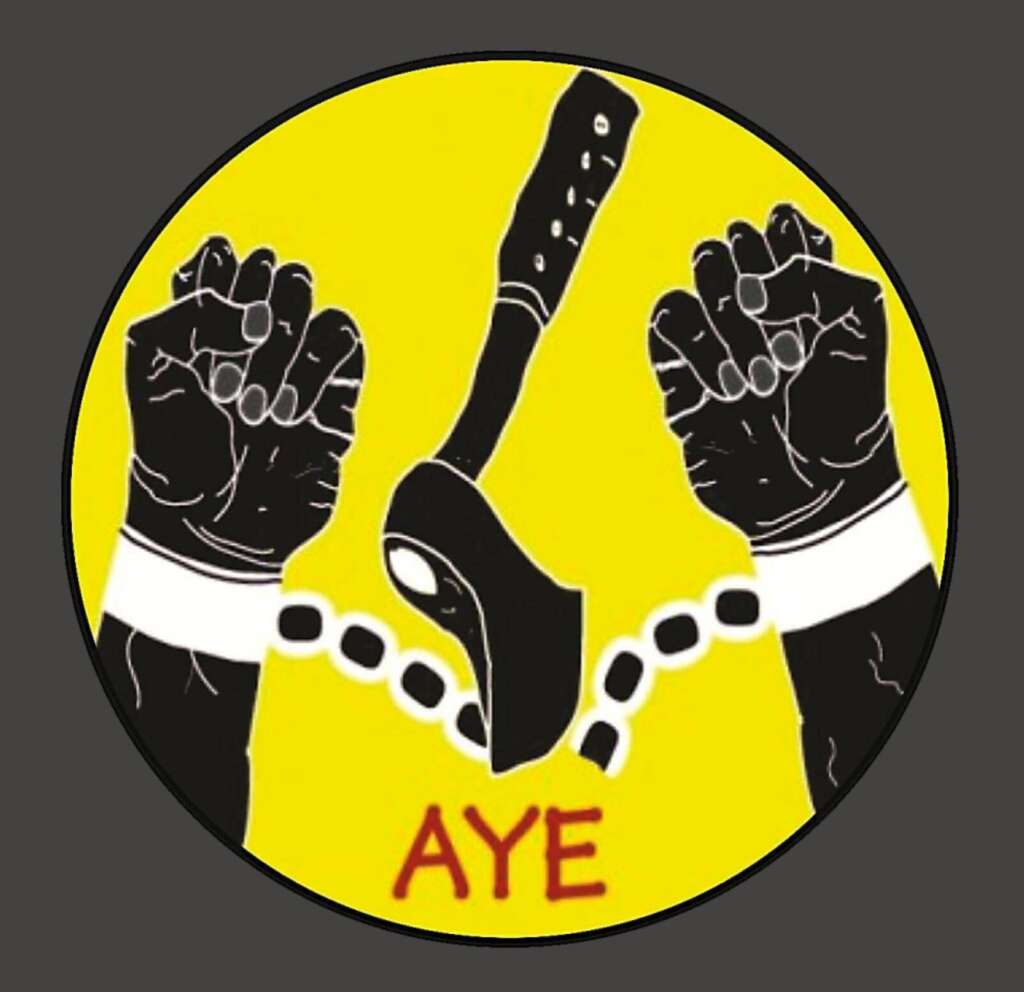Trends
Everything to know about Black Axe Confraternity
Learn about the History, Initiation, structure, and secrets of The Black Axe Confraternity (Aye Axemen), an offshoot of the Neo-Black Movement of Africa.

The Black Axe Confraternity (Aye Axe-men) is an offshoot of the Neo-Black Movement of Africa a Pan African movement that emerged from the University of Benin in Edo State in the late 1970s.
The Neo-Black Movement of Africa has repeatedly been associated with the “Black Axe”, a notorious fraternity involved in violence and killings on Nigerian campuses.
The N.B.M emerged as an emancipatory Black Power movement, and its anticolonial, pan-African message soon captured the imaginations of thousands of young men.
Inspired by America’s Black Panther Party, the N.B.M. chose a more militant path. Its logo was an axe smashing the shackles of a slave, and its colours were black (for blackness), white (for peace), and yellow (for intellect).
It produced a stringent code of conduct and a quarterly magazine filled with self-help, poetry, and agitprop called the Black Axe. Benin City was the movement’s spiritual home, its “mother temple.”
How Was Black Axe Confraternity Founded?
The Neo-Black Movement of Africa was founded on the 7th of July, 1977, by nine students at the University of Benin, on the edge of the oil-rich Niger Delta. They pledged to purge Africa of racism and oppression, and promote research into traditional culture, including juju, a religion based on spiritual contagion through physical contact, whose practitioners imbue objects with divine power.
The nine students called their philosophy “Neo-Blackism.” “Our organization was going to be the vanguard in the move to create a new black nation,” wrote one of the N.B.M. cofounders. “We were to see ourselves as leaders of all black men world-wide.”
Today, the N.B.M is active on almost every continent and has a self-reported membership of around 30,000 members. The leaders of the N.B.M. claim their group has evolved from a campus fraternity into an international N.G.O. dedicated to “equality and social justice for all.”
However, in recent years, police officers and prosecutors in various countries such as the US, Canada, UK, and Italy have investigated N.B.M members. They accused them of a wide range of criminal activities such as fraud, money laundering, drug trafficking, and trafficking in human beings.
The Decline of Black Axe Confraternity
In the 1980s, confraternities became infected with violence. Campus cults turned into authentic breeding-grounds of Nigerian organized crime. Military leaders, keen to squash student opposition, endowed cults with money and guns, which they used to attack student unions. But cults also fought one another bitterly for control of campuses across Nigeria.
In 1997, the National Council of Elders (An Executive council of the confraternity) suspended all campus activities and moved exclusively to a zonal structure, in part to avoid being associated with the growing violence at universities.
Members simply created chapters of the confraternity without the blessing of the National Council of Elders—first in cities across Nigeria, then abroad. Reports have it that these “imposters” split from the N.B.M. and rebranded themselves under the group’s former magazine title, the Black Axe. Others say the division was not so clear.
Some reports stated that there’s no form of distinction whatsoever between the confraternities. According to Daniel Offiong, a professor of sociology at Clark Atlanta University in Atlanta, the N.B.M initial goal of promoting black consciousness and fighting for the dignity of Africans and their freedom from neo-colonialism has deteriorated into self-serving behaviour that is “notoriously and brutally violent”
He maintains that violence has in fact become the cult’s official policy The Axemen’s fraternity name for each other is “‘Axeneb’ or the butcher,” and members pride themselves on their willingness to instigate violence on campus.
On July 10, 1999, at four in the morning, forty masked Axemen burst into a dorm at Obafemi Awolowo University, Ile-Ife. Using shotguns and hatchets, they massacred five student-union leaders who had protested against cults. Another three died later from their injuries. Investigators never discovered who ordered the slaughter. Though some of those arrested allegedly confessed ties to the university’s vice-chancellor, who had blocked attempts to expel cults.
How Aye Axe Men are Initiated into the Confraternity 
According to the Study Secret Cults in Nigerian Tertiary Institutions. Published in 2003, Daniel Offiong describes the Black Axe initiation ceremonies as “gruesome, bloody, and barbaric” and says that true to their secret nature, the ceremonies take place in forests or in cemeteries, usually around a bonfire, and involve dancing, singing, drug-taking, the drinking of human blood, and the rape of women.
Offiong adds that all fraternities initiate new members on Saturdays at midnight. For some cults, initiates undergo what Offiong calls the “test of manhood,” which involves being flogged, kicked, and hit with belts and sticks while stripped to the pants, before being taken to the “‘island’,” or initiation site.
The initiates take an oath of secrecy around a bonfire and put on their fraternity clothes. Afterwards, they are given a new name and made to sign a membership scroll and provide their thumbprint in the blood. Drinking, dancing, drug-taking, and drumming begin when the new members are presented to the larger group and end in the early hours of the morning with a procession (called the “‘jolly'” by the Black Axe) to the new members’ lodgings.
Structure of the Aye Axemen Confraternity
A chapter of the Black Axe confraternity is usually headed by an elected chairman and priest. Those below them were sorted into three groups: eyes, criers, and butchers. Eyes keep watching for police raids at initiations and other gatherings. Criers publicize events and proselytize Black Axe principles in flyers or emails. Butchers were enforcers. They punished transgressions of the N.B.M. code of conduct but also fought rival cults.
July 7 of every year is a day set aside by the Black Axe confraternity to celebrate the establishment of the group and the founding father of the confraternity. Every year they initiate new members and engage in other violent activities.
Members of the confraternity are recognizable by their clothing. They wear black pants, a long-sleeved white shirt, a black coat with the axe insignia on the front and back. Coupled with a black beret with a yellow ribbon tied around it. Also, Members are known to use charms and what Offiong calls “fetish rituals” to gain supernatural power and protection from rival members and police.
Watch Video below to Learn more about Aye Axe Men.
